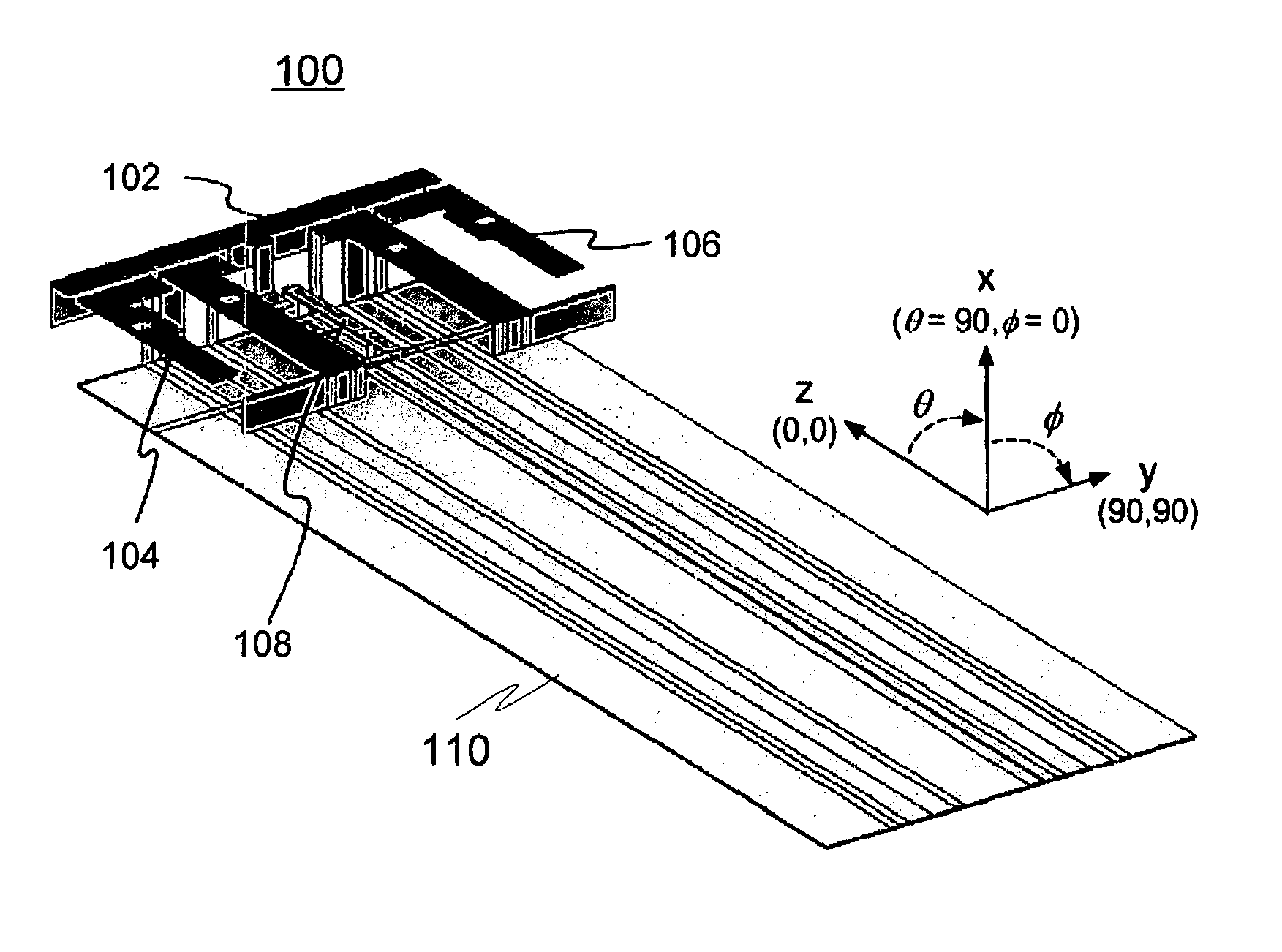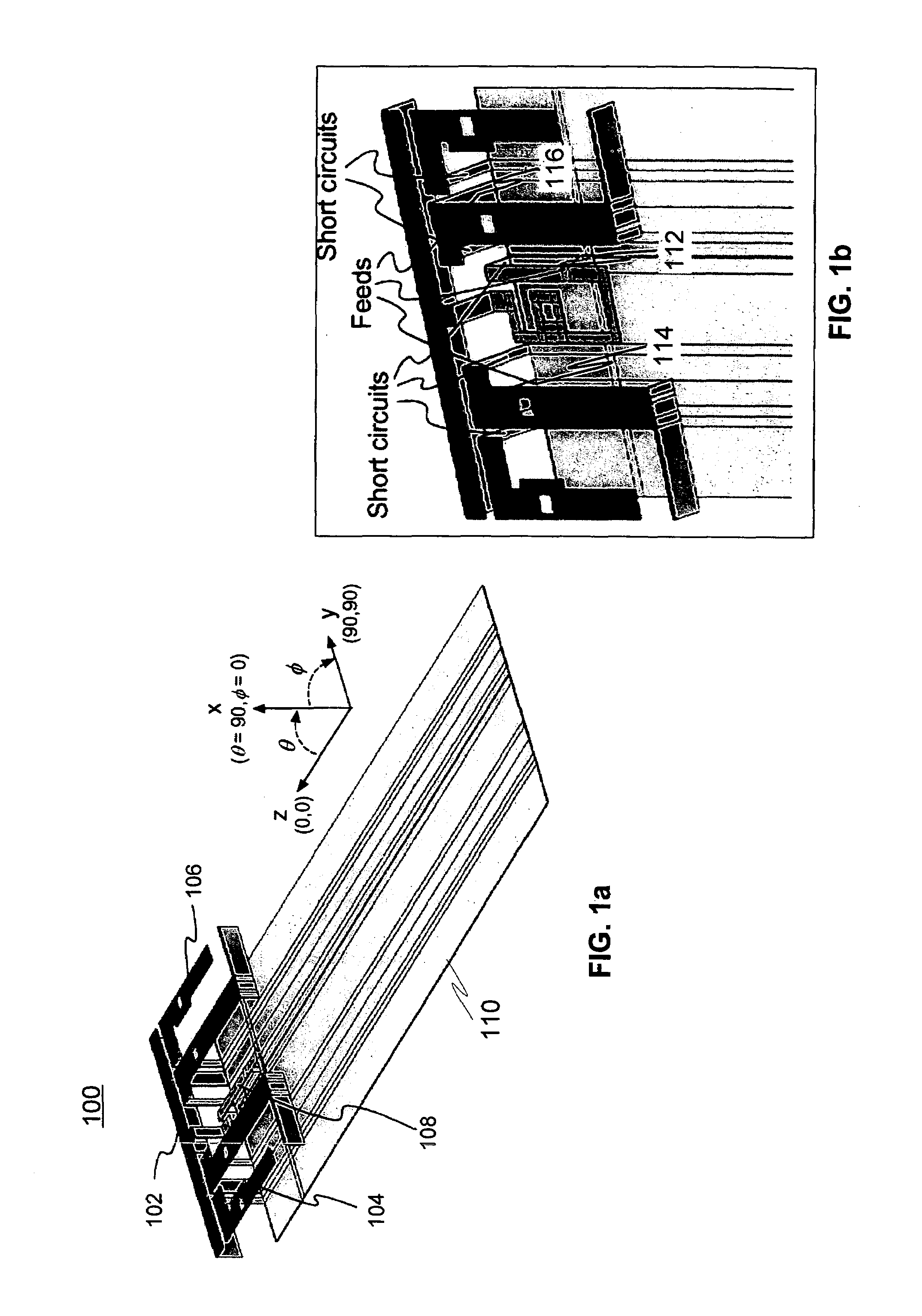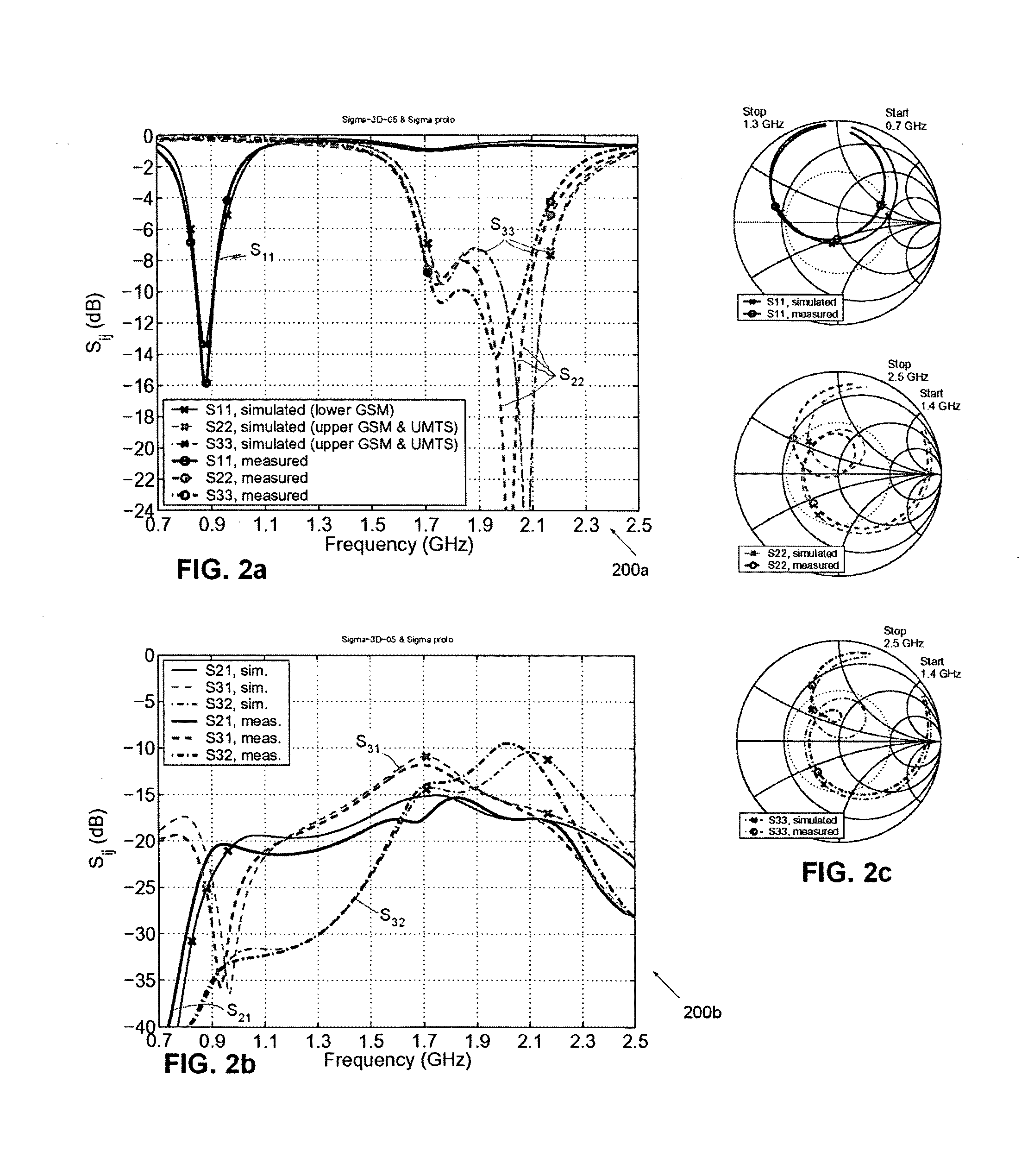Multiband antenna arrangement
a multi-band antenna and antenna technology, applied in the field of radio antennas, can solve the problems of increasing complexity, affecting the performance of the antenna, and affecting the performance of the antenna, and achieve the effects of enabling antenna diversity (and mimo) and simple rf front end solutions, low envelope correlation, and good diversity performan
- Summary
- Abstract
- Description
- Claims
- Application Information
AI Technical Summary
Benefits of technology
Problems solved by technology
Method used
Image
Examples
Embodiment Construction
[0057]FIGS. 1a &1b illustrate a first exemplary arrangement for an antenna module 100 according to an advantageous embodiment of the invention, where the antenna module 100 consists of a separate lower band antenna 102, which is advantageously designed for the GSM850 (824-894 MHz) and E-GSM900 bands. In addition, the antenna module 100 comprises two dual-resonant coplanar shorted patch antennas 104, 106. The two dual-resonant coplanar shorted patch antennas 104, 106 are advantageously located symmetrically at the corners of the ground element 110.
[0058]In alternative embodiments the dual resonant coplanar shorted patch antennas may be any antenna element, for example it could be a resonant or non-resonant antenna element. A non-resonant antenna element may be made resonant with the use of a matching circuit and coupled to a ground plane structure. The use of a dual resonant antenna element is a preferred embodiment as this will allow operation at multiple frequency bands.
[0059]The t...
PUM
 Login to View More
Login to View More Abstract
Description
Claims
Application Information
 Login to View More
Login to View More - R&D
- Intellectual Property
- Life Sciences
- Materials
- Tech Scout
- Unparalleled Data Quality
- Higher Quality Content
- 60% Fewer Hallucinations
Browse by: Latest US Patents, China's latest patents, Technical Efficacy Thesaurus, Application Domain, Technology Topic, Popular Technical Reports.
© 2025 PatSnap. All rights reserved.Legal|Privacy policy|Modern Slavery Act Transparency Statement|Sitemap|About US| Contact US: help@patsnap.com



